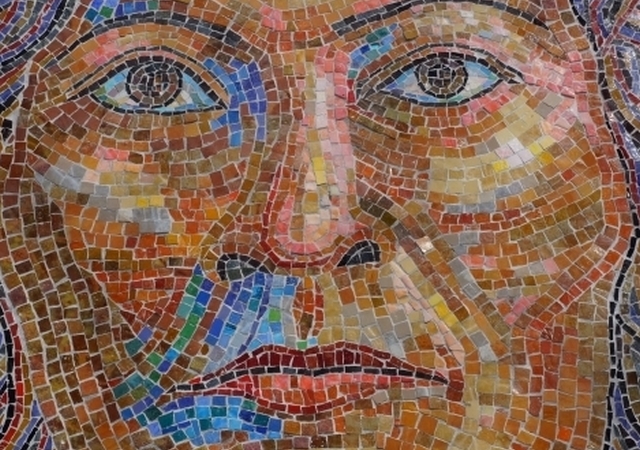
In the early morning hours of July 5, 1953, two New York City police officers spotted a figure on the ground near the corner of Fifth Avenue and 106th Street in East Harlem. As they approached, they saw the body of a woman with bronze-colored skin. Once a towering woman at five feet, ten inches, she now lay in the street, unconscious. They rushed her to Harlem Hospital, where she died shortly thereafter. The woman carried no handbag and had no identification on her. No one came to the morgue to claim her body. No missing person’s case fit her description. She was buried in the city’s Potter’s Field. One month later, the woman was identified as award-winning Puerto Rican poet Julia de Burgos. Her family and friends exhumed and repatriated her body.
When I began writing about Julia de Burgos, I hesitated to mention her notorious death, seeking to move away from the narratives of victimhood that have shrouded her life for more than half a century. I wanted to focus on her poetry, her activism for women’s rights, social justice and the independence of Puerto Rico, and her legacy. Most Puerto Ricans already know her story, and many both on the island and in New York have been captivated by her life. However, I soon realized the importance of recounting even the most difficult details as I introduced her to new audiences. Her migration experience and her death on the streets of New York capture the imaginations of readers everywhere. Becoming Julia de Burgos builds on recent approaches to her work that focus on movement, flow, and migration. This book proposes a new way of reading Burgos’s work, life, and legacy, focusing on the escape routes she created in her poetry to write herself out of the rigid confines of gender and cultural nationalism.
For those of you who are not familiar with Burgos, let me offer a brief biographical sketch. Julia Constanza Burgos García was born on 17 February 1914 in the town of Carolina, Puerto Rico, the eldest of Paula García de Burgos and Francisco Burgos Hans’s thirteen children. Julia was intimately familiar with struggle, hardship, and death. She watched six of her younger siblings die of malnutrition and other illnesses associated with poverty. She obtained a teaching certification, a two-year degree, from the University of Puerto Rico, but would only work as a teacher for a year. In 1934, she married Rubén Rodríguez Beauchamp who she divorced only three years later. As a divorced woman in a conservative Catholic society, Burgos found that gossip, speculation, and vicious rumors undermined her respectability. During this time, she wrote her first collection of poetry, Poemas exactos a mí misma (Poems to Myself), which she later considered juvenilia and never published. In those early years, she also wrote “Río Grande de Loíza,” which became one of her most well-known works and was later included in her first published collection, Poema en veinte surcos (Poem in Twenty Furrows, 1938). This early work explored social justice and feminist themes, which she would continue to write about throughout her life. In poems such as “Pentacromia” and “A Julia de Burgos” she would write about her frustration with the institution of marriage and the limited roles available to women. In “Pentacromia” she repeats in each of the six stanzas the line “Hoy, quiero ser hombre (Today, I want to be a man),” expressing her desire for greater freedom to travel, and be an active participant in the world. In the poem, “A Julia de Burgos” she voices her frustration with social expectations of femininity through a split or double consciousness, suggesting postmodernist ideas of identity as performance. The speaker dramatizes the conflict between her socially acceptable constructed identity and her inner voices as a woman artist, as can be noted in the lines below.
Tú en ti misma no mandas; a ti todos te mandan;
en ti mandan tu esposo, tus padres, tus parientes,
el cura, la modista, el teatro, el casino,
el auto, las alhajas, el banquete, el champán,
el cielo y el infierno, y el qué dirán social.
En mí no, que en mí manda mí solo corazón,
mi solo pensamiento; quien manda en mí soy yo.
Tú, flor de aristocracia; y yo flor del pueblo.
Tú en ti lo tienes todo y a todos se lo debes,
mientras que yo, mi nada a nadie se la debo.
(You in yourself rule not; you’re ruled by everyone;
in you your husband rules, your parents, relatives,
the priest, the dressmaker, the theater, the casino
the car, the jewels, the banquet, the champagne,
the heaven and the hell, and the what-will-they-say.
Not so in me, who am ruled only by my heart,
only by what I think; who me commands is me.
You, aristocratic blossom; and I plebian floret.
You have it all with you and you owe it all to all,
While I, my nothing to no one do I owe.)
These lines offer an example of her commitment to freedom from prescribed roles for women. Burgos wrote and published her second collection of poetry, Canción de la verdad sencilla (Song of the Simple Truth), in 1939. Her third and final collection of poetry, El mar y tú (The Sea and You), was published posthumously in 1954. In January 1940, Burgos left Puerto Rico for New York where she stayed for six month. She then moved to Havana where she lived for two years before returning to New York in 1942. Several factors influenced her decision to leave Puerto Rico in 1940. The turn in Puerto Rican politics away from the nationalist and independence movement was one of the reasons. Also, many Puerto Rican writers, artists and musicians left for New York in those years in search of a wider audience, publishing houses, recording studios and greater opportunities to continue to develop their craft. Julia de Burgos wanted to be a part of this.
From late 1942 until her death, Burgos lived in New York where she struggled to make a living as a writer. She wrote for the Spanish-language weekly Pueblos Hispanos from 1943 to 1944, further developing her political voice. However, her journalism shows her political commitment to radical democracy and the struggle for immigrant and Puerto Rican rights and her advocacy of solidarity with Harlem’s African American community. In addition, these writings as well as her poetry reveal her understanding of cultural identity as fluid and unbound by national territory. While in the hospital months before her death, she wrote her two final poems in English, “Farewell in Welfare Island,” and “The Sun in Welfare Island,” describing the condition of exile and her sense of seclusion and desolation. These poems can be read as precursors to the literature of Nuyorican and U.S. Latina/o writers of the 1970s in both theme and emotional intonation.
Becoming Julia de Burgos recuperates a savvy, ambitious and influential intellectual who was a creative force both on the island and in New York. She is claimed by later generations as a beloved and inspiring icon and a fierce ancestor. There are at least two historical moments where we see a renewed interest in Julia de Burgos’s life and work. The civil rights movement of the 1960s is one of those moments. The women’s movement of that era led to a renewed interest in the poet on the island by feminist writers, artists and literary critics. The Nuyorican Movement of the 1970s led to ethnic revitalization and search for a deeper understanding of Puerto Rican history and culture that so many New York Puerto Ricans were distanced from. This coincided with first translations of some of her poems into English. As Latina feminists sought for intellectual genealogies during the women of color movement, they reclaimed Julia de Burgos as an ancestor. Julia de Burgos is remembered, reinvented and invoked in the poetry, prose, and artwork of various New York Latino writers and visual artist such as Sandra María Esteves, Mariposa and Andrea Arroyo, just to name a few. She is inscribed in the neighborhood of El Barrio in the form of murals, a cultural center named in her honor, and a street named after her. Sixty years after Julia de Burgos was found unconscious on an El Barrio street corner, she now forms part of the neighborhood’s urban landscape and cultural mythology.
This entry was originally posted in mujerestalk.

Vanessa Pérez is an Associate Professor of Puerto Rican and Latino Studies at City University of New York, Brooklyn College, and the editor of Hispanic Caribbean Literature of Migration: Narratives of Displacement. She serves as an associate investigator on the City University of New York-New York State Initiative on Emergent Bilinguals (CUNY-NYSIEB), a collaborative project of the Research Institute for the Study of Language in Urban Society (RISLUS) and the Ph.D. Program in Urban Education at the CUNY Graduate Center.








